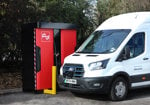DRIVER attitudes are one of the biggest risks to fleet safety, according to fleet managers in charges of hundreds of vans. Three managers in a major survey – one dedicated to a fleet, another to logistics and a third to health and safety – regarded safety-negative driver attitudes as a major difficulty in managing road risk.
But part of the problem could be caused by management failures to support the fleet department with a company-wide health and safety culture and unquestioning support for the fleet manager’s authority.
Risk management issues flets raised were problems in getting the safety message across and balancing health and safety requirements with the need to make a profit.
The survey also revealed significant differences between large and small companies.
The two bigger companies in the survey had written safety policies that covered driving for work; one asked new employees to agree in their employment contract with company policies such as a ban on alcohol and drugs at work.
The manager of the smallest company did not have a written safety policy or contractual safe driving requirements, preferring to speak to drivers about the need to drive courteously and safely.
One manager said that he wanted to keep accident prevention a ‘human’ matter, and felt that talking about it to his staff in terms of cost saving was not the right approach.
Only one manager reported a formal risk assessment system covering all aspects of driving. Formal or informal driver and vehicle assessments were in place in the other companies.
Driver selection was seen as crucial to ensuring low incident rates by three of the managers. Minimum ages and preferential employment of older drivers were reported in two cases.
Time pressure at work was present only in retail operations, where narrow delivery windows required a sophisticated route-planning process and online re-routing.
Fatigue was reported to be a problem in one company with shift-working but the manager pointed out that none of his employees had been absent because of tiredness.
In one company, driving performance was monitored through vehicle tracking.
Drivers and managers should work together
THE report identified a number of key areas where drivers and fleet managers should work more closely together.
The confession of some drivers to have fallen asleep while driving, however, came as an unexpected surprise and identified the need for future action.















Login to comment
Comments
No comments have been made yet.